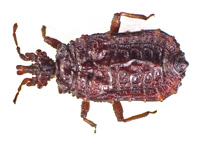Abstract
The East China Sea is part of the Warm Temperate Northwest Pacific zoogeographic province and, as such, has a high biodiversity and many tropical and subtropical biotic elements. Nevertheless, many invertebrate groups from this area remain poorly studied. Ostracods are one of them, especially those belonging to the subclass Myodocopa. In this paper we provide the first data on a diverse myodocopid family, Sarsiellidae, not only for the East China Sea, but also for Korea. Five species are reported in this paper from three Korean islands (Jeju, Chuja, and Maemul), and they are only a part of the ostracods collected during this study, indicating a high diversity of the group in this region. Three new species, Eurypylus koreanus sp. nov., Eusarsiella hanguk sp. nov., and Sarsiella nereis sp. nov., clearly stand apart from their respective congeners, mostly by prominent shell characters but also by details of the soft part morphology. Their affinity though clearly indicates a close connection of the region with the more southern zoogeographical realms, especially Central Indo Pacific and partly Temperate Australasia. Two species previously known from Japan (north part of the Sea of Japan and southeastern part of the Pacific Coast of Japan), Sarsiella japonica Hiruta, 1977 and S. misakiensis Kajiyama, 1912, are redescribed. Based on 11 newly obtained COI sequences we construct a preliminary phylogenetic tree, which supports previous hypotheses based on the morphological data, that Eusarsiella Cohen & Kornicker, 1975 is a polyphyletic taxon. With the maps of species distribution provided for each of the three genera, we give an overview of their current zoogeography, and clearly indicate areas that have no data, mostly due to the lack of investigation.

